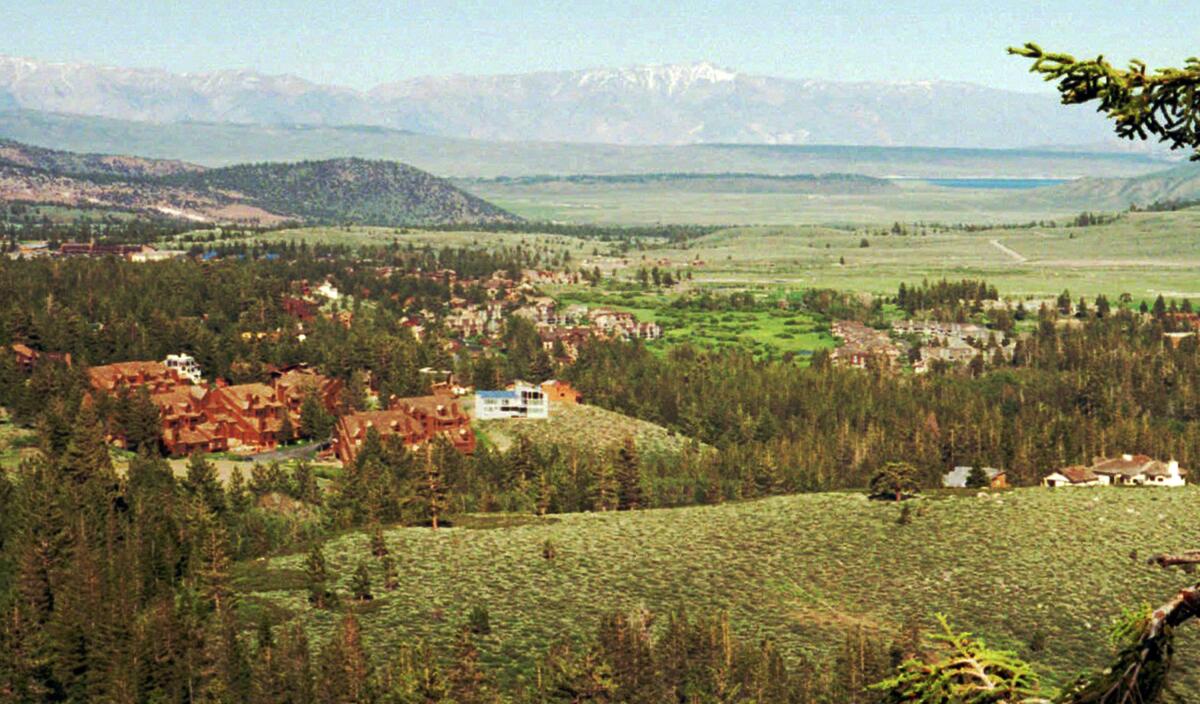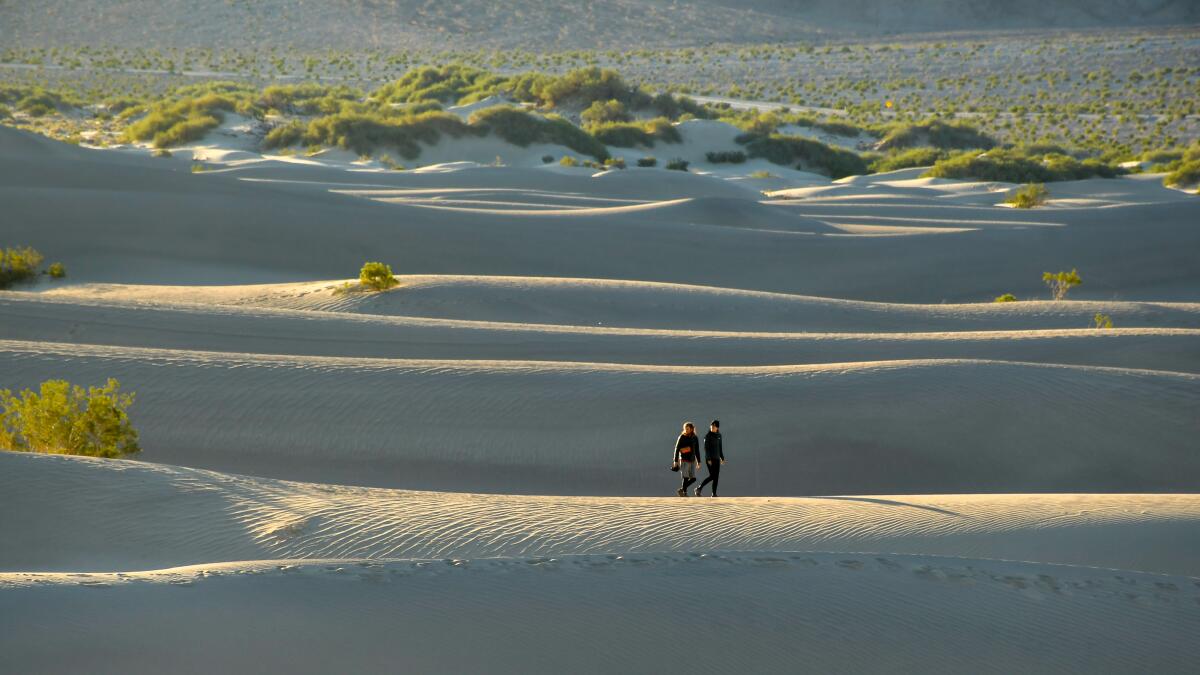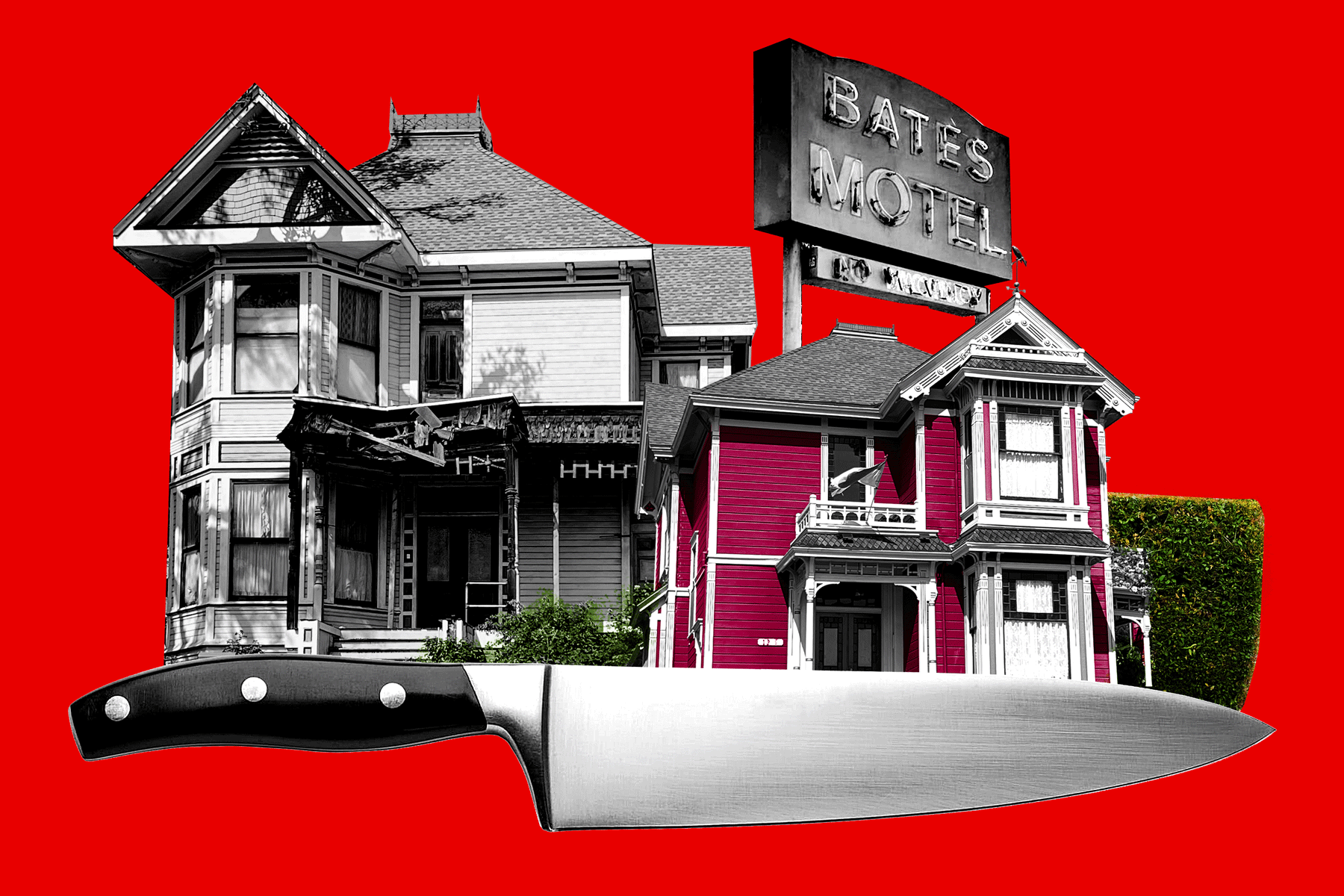Caltech researchers say a risky California volcano is cooling down

Good morning. It’s Tuesday, Oct. 24. Here’s what you need to know to start your day.
- Caltech researchers say a risky California volcano is cooling down
- Gov. Gavin Newsom travels to China this week
- How to get scary-close to 12 iconic L.A. film and TV horror homes
- And here’s today’s e-newspaper
Sign up for Essential California
The most important California stories and recommendations in your inbox every morning.
You may occasionally receive promotional content from the Los Angeles Times.
Who has ‘volcanic eruption’ on their California threats bingo card?
Californians are familiar with earthquakes. We’re used to facing off against wildfires. We’ve weathered storms that brought flooding and debris flows. But one natural event most of us probably aren’t thinking about too often: volcanic eruptions.
But that is something the U.S. Geological Survey (USGS) monitors in California and elsewhere. And as Times reporter Rong-Gong Lin II detailed this week, one of the riskiest volcanoes in the state has been getting a lot of attention after decades of seismic activity.
Beneath the Long Valley Caldera, located near Mammoth Lakes in Mono County, lies a dormant supervolcano, where researchers have for decades observed earthquake swarms and ground inflation (yes, those are real things).
“Generally speaking, changes in the shape of the ground and earthquake activity are commonly observed before eruptions,” Rong-Gong wrote. “But those things do not necessarily mean an eruption will arrive soon.”
Researchers from Caltech wanted to answer the will-it-won’t-it-erupt question. According to a study published last week in the journal Science Advances, it’s not gonna blow, scientists say.
The researchers measured seismic waves in the Long Valley Caldera to create underground images of the volcano’s magma chamber, which they said showed that the magma was actually cooling down rather than gearing up for an eruption.
“The recent seismic activity is a result of fluids and gases being released as the area cools off and settles down,” according to a news release from Caltech.
Rong-Gong notes that while an eruption isn’t considered likely for this particular volcano, others in the state do pose a risk. Long Valley Caldera and two others — Mount Shasta and Lassen Volcanic Center — are listed under “Very High” on the USGS’ threat rankings. And an eruption could have major impacts across the state, as Rong-Gong explained:
“Volcanic ash, when wet, is conductive and could disrupt high-voltage lines that supply electricity to millions of California homes. It could interfere with travel on Interstate 5, the main route between California and Oregon, masking windshields and making roads slippery, even impassable. Ash could disrupt hundreds of daily flights in Northern California or the Mammoth Mountain area or bring down jetliners. And it could contaminate water supplies to much of the state.”
If you’re like me, you probably don’t think about volcanoes until a story like this comes along and now you’re thinking only about volcanoes. Where are they? How many are active? What does that mean? Maybe flashes of that 1990s disaster movie about a volcano erupting in L.A. come to mind.
To learn more, I reached out to USGS’ California Volcano Observatory, which does exactly what that name says.
Physical volcanologist Jessica Ball told me it’s tricky to count all the volcanoes active and inactive in the state, because some of the volcanic fields have hundreds of small vents.
But zooming out just a bit, she said California has 11 volcanic areas designated as both active and threatening and “which have erupted within the last few thousand years.”
Those are: Mount Shasta, Medicine Lake Volcano, Lassen Volcanic Center, the Clear Lake Volcanic Field, the Mono Lake Volcanic Field, Mono-Inyo Craters, Mammoth Mountain, the Long Valley Caldera, Ubehebe Craters, the Coso Volcanic Field, and Salton Buttes.
So how often are the scientists at the California Volcano Observatory observing volcanic activity? Ball said they “identify at least half a dozen noticeable swarms each year at various volcanoes.”
“These are not a sign of an impending eruption, however, but rather the reflection that our volcanic systems are active,” she told me. “The magma, liquids and gases in our volcanoes’ plumbing can still burble, rattle and vibrate even if it’s not getting ready to erupt.”
Maybe knowing more about volcanoes and how scientists keep an eye on them is reassuring. Or maybe volcanic ignorance was bliss.
Today’s top stories

Labor
- Since more than 15,000 hotel workers began intermittent strikes, their employers have been replacing those union members with temporary workers, including migrants recruited from Skid Row.
- California congressman offers bill to allow striking workers to collect unemployment pay.
Newsom abroad
- Gov. Gavin Newsom is in China this week to promote cooperation on climate change.
- But first he stopped in Israel, where he comforted a mother whose son was kidnapped by Hamas, visited a hospital where Israelis were recovering from injuries, and met with top Israeli officials. The trip marks a sudden leap into foreign affairs for Newsom and it comes at an especially fraught time.
War in the Middle East
- Some Jewish activists are experiencing a political identity crisis, even as they advocate to halt to Israel’s bombardment of the Gaza Strip.
- How big are Israel and Gaza? Smaller than you might think.
- Dave Chappelle tackles the Israel-Hamas war onstage with a mixed reaction that included early exits.
More big stories
- Homeless people living in San Francisco are 16 times more likely to die suddenly than their fellow residents who are housed, according to a new study.
- A Santa Barbara woman harangues a street vendor in second viral video; D.A. brings charges.
- A former Major League Baseball pitcher has been arrested in connection with the killing of his wife’s father and the shooting of her mother two years ago in Lake Tahoe, according to authorities.
- All five California Republicans from districts President Biden won in 2020 stood firmly behind Trump-endorsed Ohio Rep. Jim Jordan throughout his three failed attempts to secure the House speaker’s gavel. Could the choice come back to haunt them with voters?
- An off-duty Alaska Airlines pilot was booked Monday on 83 counts of attempted murder after he tried to “disrupt the operation” of the engines of a plane bound for San Francisco.
Get unlimited access to the Los Angeles Times. Subscribe here.
Commentary and opinions
- Michael Hiltzik: Humans have driven 21 more species to extinction. Here’s why we should care.
- Jackie Calmes: Has the Republican Party proved to be so anti-government that it cannot govern at all?
- Opinion: Why shouldn’t elephants have rights? They’re intelligent beings who can feel joy and sorrow.
- Opinion: Why the Kenneth Chesebro and Sidney Powell guilty pleas are so dire for Donald Trump.
- Jean Guerrero: Horrific social media posts about the Israel-Hamas war show how being online ruins independent thinking. Can we fix it?
- Bill Plaschke: The Lakers’ championship hopes begin — and end? — with LeBron and AD.
Today’s great reads
‘I’ve never seen anything like this’: Death Valley gleams with water, wildflowers and color. Death Valley is still wet. And only a fortunate few seem to be getting the best of it.
Other great reads
- Who’s behind the “sassy man apocalypse” taking over TikTok?
How can we make this newsletter more useful? Send comments to [email protected].
For your downtime
Going out
- 🏚️ How to get scary-close to 12 iconic L.A. film and TV horror homes.
- 🍷 🛍️ Whether stopping by for an afternoon, a day or a long weekend, there’s plenty to keep you busy in L.A.’s Fairfax neighborhood.
- 🎭 A new “Spring Awakening” has a diverse cast. It’s more transgressive than ever.
Staying in
- 📕 Paul Newman’s love letters to Joanne Woodward were too “naughty” for daughter’s book.
- 🎶 It’s been 15 years since “High School Musical 3: Senior Year” opened in theaters. Here’s our official ranking of all the songs in the movie.
- 💐 Honor your loved ones with our digital Día de Muertos altar.
- 🧑🍳 Here’s how to make a six-course bean supper without meat.
- ✏️ Get our free daily crossword puzzle, sudoku, word search and arcade games.
And finally ... a great photo

Today’s great photo is from Times photographer Allen J. Schaben at The Ministry of Pecularities, one of the most intricate and detailed escape rooms in the L.A. area. Objects on walls will come alive with theme park trickery, and puzzles are designed primarily to reveal narrative details.
Have a great day, from the Essential California team
Ryan Fonseca, reporter
Kevinisha Walker, multiplatform editor
Laura Blasey, assistant editor
Check our top stories, topics and the latest articles on latimes.com.
Sign up for Essential California
The most important California stories and recommendations in your inbox every morning.
You may occasionally receive promotional content from the Los Angeles Times.






